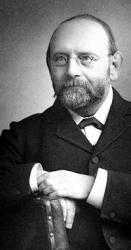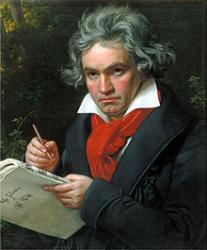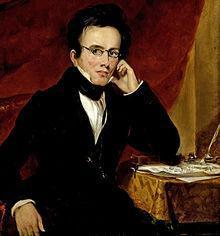Planning worship?
Check out our sister site, ZeteoSearch.org,
for 20+ additional resources related to your search.
- |
User Links
Search Results
O Master, it is good to be
Author: Arthur P. Stanley Appears in 66 hymnals Topics: Our Lord Jesus Christ His Ministry Used With Tune: TRANSFIGURATION
O Master, it is good to be
[Lord, it is good for us to be]
Appears in 20 hymnals Composer and/or Arranger: Beethoven Tune Key: F Major Incipit: 51712 34255 55666 Used With Text: Lord, it is good for us to be
[Lord, it is good for us to be]
Lord, it is good for us to be
Author: Dean Stanley Hymnal: The Hymnal, Revised and Enlarged, as adopted by the General Convention of the Protestant Episcopal Church in the United States of America in the year of our Lord 1892 #166 (1894) Lyrics: 1 Lord, it is good for us to be
High on the mountain here with Thee;
Where stand revealed to mortal gaze
Those glorious saints of other days;
Who once received on Horeb's height
The eternal laws of truth and right;
Or caught the still small whisper, higher
Than storm, than earthquake, or than fire.
2 Lord, it is good for us to be
Entranced, enwrapt, alone with Thee;
And watch Thy glistering raiment glow
Whiter than Hermon's whitest snow,
The human lineaments that shine
Irradiant with a light divine:
Till we too change from grace to grace,
Gazing on that transfigured face.
3 Lord, it is good for us to be
Here on the holy mount with Thee;
When darkling in the depths of night,
When dazzled with excess of light,
We bow before the heavenly voice
That bids bewildered souls rejoice,
Though love wax cold, and faith be dim,
"This is My Son; O hear ye Him!"
Amen. Topics: The Transfiguration Languages: English Tune Title: [Lord, it is good for us to be]
Lord, it is good for us to be
Lord, It Is Good for Us To Be
Author: Arthur Penrhyn Stanley Hymnal: The Hymnal and Order of Service #204 (1937) Lyrics: 1 Lord, it is good for us to be
High on the mountain here with Thee,
Where stand revealed to mortal gaze
Those glorious saints of other days,
Who once received on Horeb's height
Th'eternal laws of truth and right,
Or caught the still small whisper, higher
Than storm, than earthquake, or than fire.
2 Lord, it is good for us to be
Entranced, enwrapt, alone with Thee;
And watch Thy glistering raiment glow
Whiter than Hermon's whitest snow,
The human lineaments that shine
Irradiant with a light divine:
Till we too change from grace to grace,
Gazing on that transfigured face.
3 Lord, it is good for us to be
Here on the holy mount with Thee;
When darkling in the depths of night,
When dazzled with excess of light,
We bow before the heavenly voice
That bids bewildered souls rejoice,
Though love wax cold, and faith be dim:
"This is my Son; O hear ye Him!"
Amen.
Lord, It Is Good for Us To Be
Lord, It Is Good for Us To Be
Author: Arthur Penrhyn Stanley Hymnal: The Hymnal and Order of Service #204 (1926) Meter: 8.8.8.8 D Lyrics: 1 Lord, it is good for us to be
High on the mountain here with Thee,
Where stand revealed to mortal gaze
Those glorious saints of other days,
Who once received on Horeb's height
Th'eternal laws of truth and right,
Or caught the still small whisper, higher
Than storm, than earthquake, or than fire.
2 Lord, it is good for us to be
Entranced, enwrapt, alone with Thee;
And watch Thy glistering raiment glow
Whiter than Hermon's whitest snow,
The human lineaments that shine
Irradiant with a light divine:
Till we too change from grace to grace,
Gazing on that transfigured face.
3 Lord, it is good for us to be
Here on the holy mount with Thee;
When darkling in the depths of night,
When dazzled with excess of light,
We bow before the heavenly voice
That bids bewildered souls rejoice,
Though love wax cold, and faith be dim:
"This is my Son; O hear ye Him!"
Amen. Topics: Church Year Minor Festivals; Transfiguration; Christ Transfiguration on; Transfiguration of Christ Scripture: Matthew 17:1-8 Languages: English Tune Title: GÖR PORTEN HÖG, GÖR DÖRREN BRED
Lord, It Is Good for Us To Be
Joseph Barnby

1838 - 1896 Person Name: Barnby Composer of "JORDAN" in New Manual of Praise Joseph Barnby (b. York, England, 1838; d. London, England, 1896) An accomplished and popular choral director in England, Barnby showed his musical genius early: he was an organist and choirmaster at the age of twelve. He became organist at St. Andrews, Wells Street, London, where he developed an outstanding choral program (at times nicknamed "the Sunday Opera"). Barnby introduced annual performances of J. S. Bach's St. John Passion in St. Anne's, Soho, and directed the first performance in an English church of the St. Matthew Passion. He was also active in regional music festivals, conducted the Royal Choral Society, and composed and edited music (mainly for Novello and Company). In 1892 he was knighted by Queen Victoria. His compositions include many anthems and service music for the Anglican liturgy, as well as 246 hymn tunes (published posthumously in 1897). He edited four hymnals, including The Hymnary (1872) and The Congregational Sunday School Hymnal (1891), and coedited The Cathedral Psalter (1873).
Bert Polman
Joseph Barnby
Ludwig van Beethoven

1770 - 1827 Person Name: Beethoven Composer of "[Lord, it is good for us to be]" in The Hymnal, Revised and Enlarged, as adopted by the General Convention of the Protestant Episcopal Church in the United States of America in the year of our Lord 1892 A giant in the history of music, Ludwig van Beethoven (b. Bonn, Germany, 1770; d. Vienna, Austria, 1827) progressed from early musical promise to worldwide, lasting fame. By the age of fourteen he was an accomplished viola and organ player, but he became famous primarily because of his compositions, including nine symphonies, eleven overtures, thirty piano sonatas, sixteen string quartets, the Mass in C, and the Missa Solemnis. He wrote no music for congregational use, but various arrangers adapted some of his musical themes as hymn tunes; the most famous of these is ODE TO JOY from the Ninth Symphony. Although it would appear that the great calamity of Beethoven's life was his loss of hearing, which turned to total deafness during the last decade of his life, he composed his greatest works during this period.
Bert Polman
Ludwig van Beethoven
John Goss

1800 - 1880 Person Name: John Goss, 1800-1880 Composer of "ST. CASIMER" in The Hymnal John Goss (b. Fareham, Hampshire, England, 1800; d. London, England, 1880). As a boy Goss was a chorister at the Chapel Royal and later sang in the opera chorus of the Covent Garden Theater. He was a professor of music at the Royal Academy of Music (1827-1874) and organist of St. Paul Cathedral, London (1838-1872); in both positions he exerted significant influence on the reform of British cathedral music. Goss published Parochial Psalmody (1826) and Chants, Ancient and Modern (1841); he edited William Mercer's Church Psalter and Hymn Book (1854). With James Turle he published a two-volume collection of anthems and Anglican service music (1854).
Bert Polman
John Goss


 My Starred Hymns
My Starred Hymns


